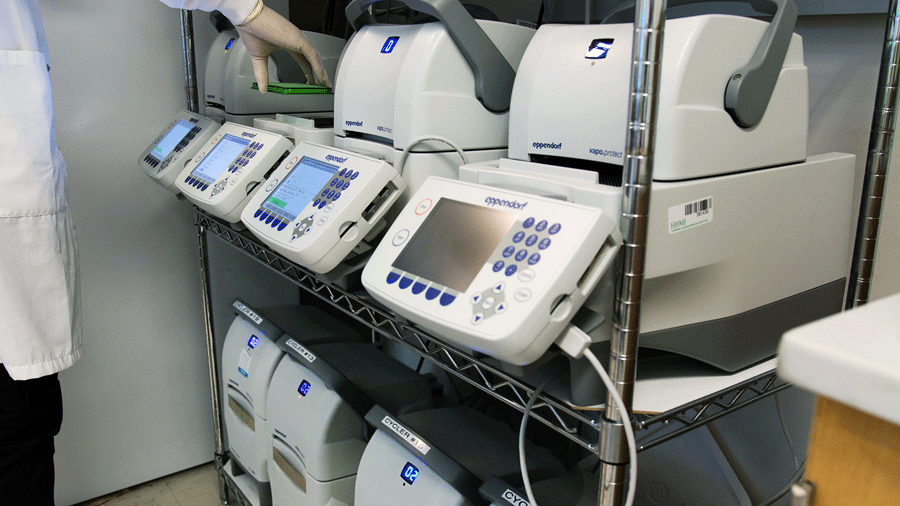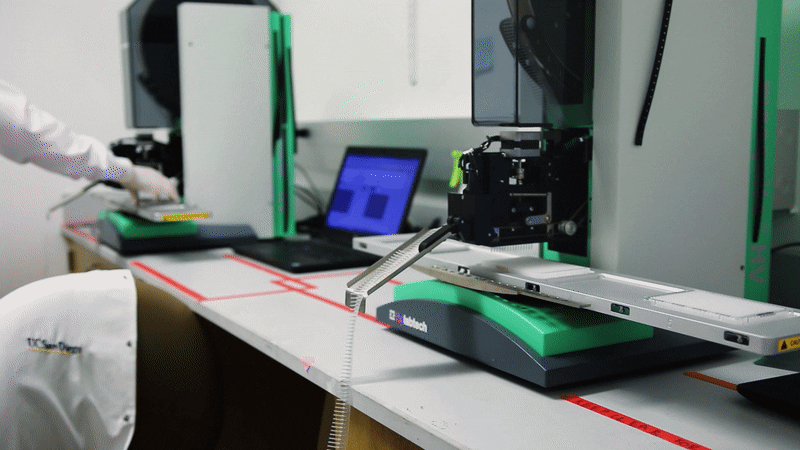High Throughput Sequencing
This page is dedicated to my work in the Knight Lab at UCSD. The Knight Lab "... uses and develops state-of-the-art computational and experimental techniques to ask fundamental questions about the evolution of the composition of biomolecules, genomes, and communities in different ecosystems, including the complex microbial ecosystems of the human body. We subscribe to an open-access scientific model, providing free, open-source software tools and making all protocols and data publicly available in order to increase general interest in and understanding of microbial ecology, and to further public involvement in scientific endeavors more generally."

The Knight Lab leverages highly parallelized, automated experimental procedures to process hundreds of samples with high reproducibility and ease of execution. We utilize robotic devices to handle miniaturized volumes for molecular biology techniques, enabling sample sizes that would otherwise be unmanageable for a research team. The lab has proposed and published standardized experimental protocols and software tools to engage a broader scientific workforce. These tools allow users to process their raw data through common microbiome analysis workflows, such as OTU picking, taxonomic assignment, and constructing phylogenetic trees from representative sequences of OTUs. The widespread use of standardized bioinformatic workflows and shared data repositories facilitates meta-analyses of thousands of samples across multiple studies.

As our software tools become more robust and widely adopted, our molecular biology techniques must continuously evolve to generate increasing amounts of data at a decreasing cost. To achieve this, our team adopts high-throughput methodologies from drug discovery, such as working with quantized sample sizes for microplate compatibility, miniaturizing reaction volumes, and incorporating specialized automation devices, applying them to next-generation sequencing. We have successfully integrated liquid handling technologies optimized for high-throughput screening, such as acoustic droplet ejection, sub-microliter pipetting, and plate washing, to perform next-generation sequencing workflows at a fraction of the cost of traditional methods.

Our highly automated robotic infrastructure extends our scientists' capabilities, enabling them to focus on developing new knowledge rather than performing repetitive tasks. We often invest our time away from instrument in optimizing protocols to increase sample throughput, reproducibility, experimental robustness, and cost efficiency, or in developing new experimental procedures that will ultimately be integrated into our automated systems. This approach compels us to view robotics as extensions of ourselves when developing experimental procedures, as they will be the tools executing our ideas, and to recognize the limitations of both organic and synthetic systems.
My participation in academic research with the Knight Lab has been the catalyst for my pursuit of a doctorate degree. Working with a team of passionate scientists dedicated to acquiring new knowledge is the most fulfilling routine I can imagine.